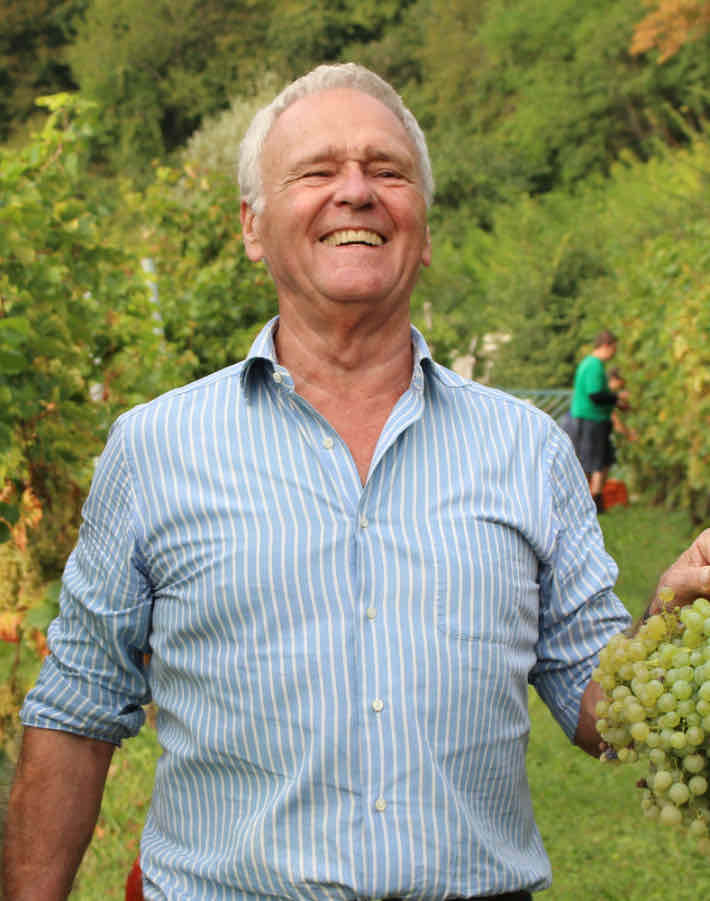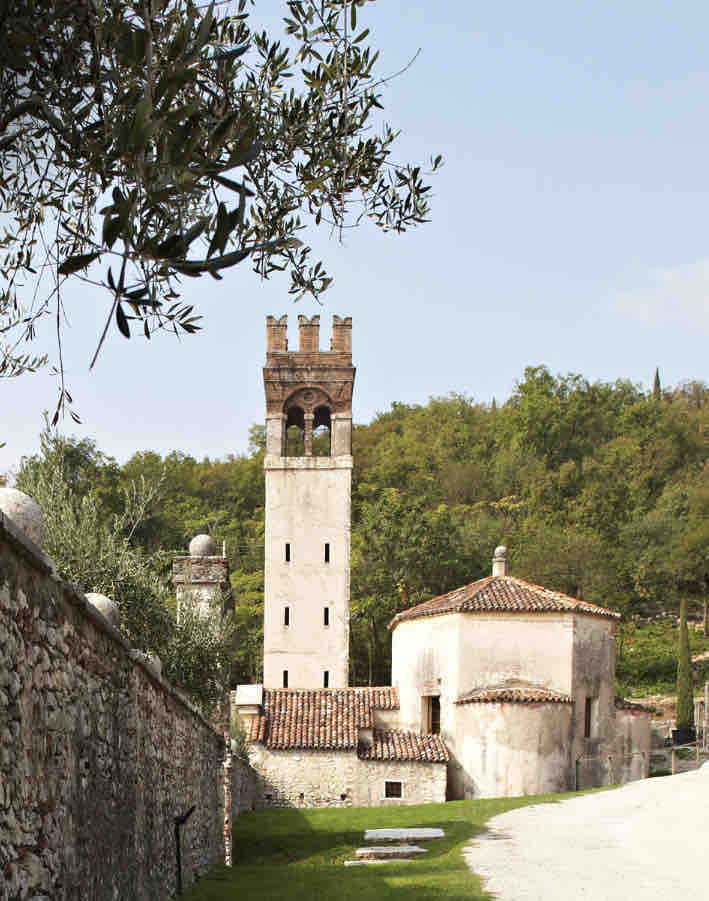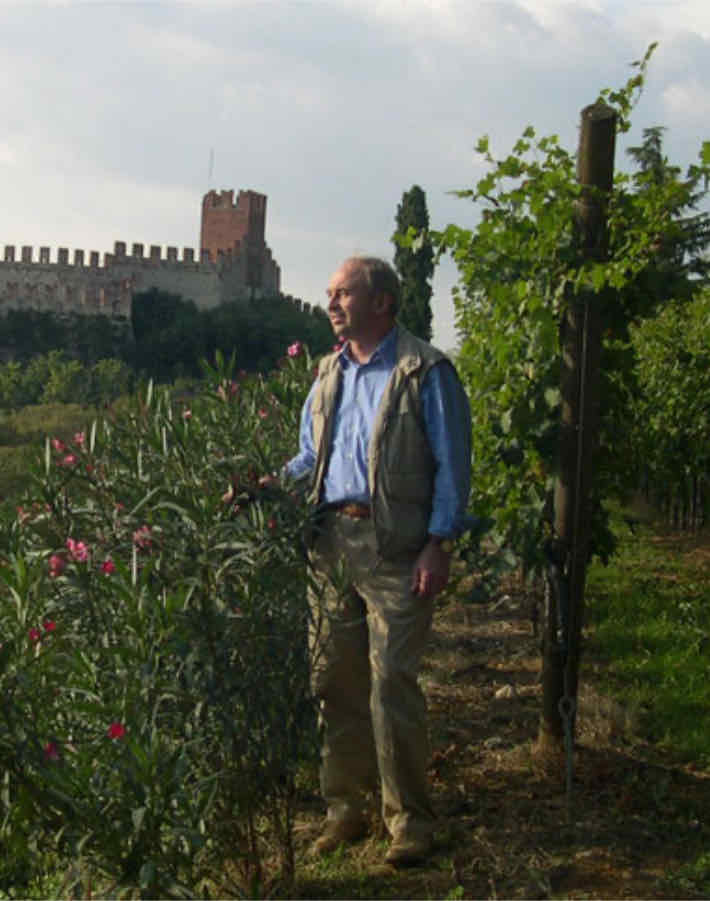We use cookies to make your experience better. To comply with the new e-Privacy directive, we need to ask for your consent to set the cookies. Learn more.
Giuseppe Quintarelli
Giuseppe Quintarelli
This producer is one of the three of the, what I call, Holy Trinity of Italy: Biondi-Santi in Montalcino, Conterno in Barolo and Quintarelli in Valpolicella. These are the three estates upon which Italy built its reputation in the world. Forget about all the Super Tuscans, that win all the big reviews, these are the quintessence of Italy - never wavering from their traditions and making wines the likes of which can't be found anywhere else in the world. There are other great producers in Valpolicella, but there is only one Quintarelli.
The estate was founded at the turn of the 20th century by Silvio Quintarelli, a grape grower utilising the mezzadria system (sharecropping). The family finally bought the land and passed to Sylvio's son Giuseppe in the 1950s who maintained the traditions of winemaking but modernised to a certain extent.
Tasting and visiting there is an experience to say the least. You enter the winery brimming with anticipation and excitement knowing that this is where some of the greatest wine 'magic' of turning grapes into nectar occurs. I visited in April 2017, guided by Giuseppe Quintarelli's grandson, Francesco. The winery is surprisingly modest, there are only 11 hectares of vineyards, but there are many, many vintages of the wines in the barrels. The tasting is hushed and low-key in a dimly lit room and always from pre-opened bottles. It almost has the atmosphere of an old library or a Dickensian office - a real throwback, but this is how they like it. As if the laws that Giuseppe set down two generations ago are still revered.
You may be forgiven for being confused by their range of wines as the nomenclature and hierarchy is complicated. So, a little explanation of the wines is required. To start, there is a dry white called Bianco Secco. A mixture of local varieties such as Trebbiano Toscano, Garganega, Saorin and a little of international varieties of Chardonnay and Sauvignon Blanc. Next up is their red, Primofiore. This is an IGT which is again is a mix of local and international varieties, Corvina, Corvinone, Cabernet Sauvignon and Cabernet Franc. This is the only red that they make that doesn't go through some form of appassimento (the grape drying process), but saying that the Cabernets have a short period of drying.
Next in the range are the Valpolicella Classico Superiore and Rosso Ca del Merlo. These two are brothers, as they are made pretty much the same way. Both are 50/50 fresh grapes and dried grapes, then go through the Ripasso process (a refermentation on the gross lees of the Amarone). The difference between the two being Valpolicella is traditional grape varieties with Rosso Ca del Merlo a blend of traditional varieties peppered with Cabernet Sauvignon, Cabernet Franc, Nebbiolo (yes, you read that right), Sangiovese and Croatina.
After these, are the pure appassimento wines. Amarone, of course, Amarone Riserva and Rosso del Bepi. These are in essence all made the same way. The wine is only called 'Amarone' when it is from a great vintage. In, let's say, 'normal' years it's called Rosso del Bepi and bumped down to IGT, but is in essence still an Amarone. In exceptional years, and only when it has been aged for at least a decade the wine becomes Amarone Riserva. When the wine is from a vintage that is not up to their exacting standards, none of these will be made. There is also Alzero, essentially an Amarone, but made with the two Cabernets and Merlot. Finally, there is Recioto. When the yeasts win, the wine becomes dry and Amarone: when the sugars win, it becomes sweet and Recioto.
Quintarelli is not for everyone. Yes, they are high priced, but not just that: these are the essence of artisanal winemaking and have tremendous personality. They have admirers all over the world with the name being uttered with reverence and respect.
Producer Information
This producer is one of the three of the, what I call, Holy Trinity of Italy: Biondi-Santi in Montalcino, Conterno in Barolo and Quintarelli in Valpolicella. These are the three estates upon which Italy built its reputation in the world. Forget about all the Super Tuscans, that win all the big reviews, these are the quintessence of Italy - never wavering from their traditions and making wines the likes of which can't be found anywhere else in the world. There are other great producers in Valpolicella, but there is only one Quintarelli.
The estate was founded at the turn of the 20th century by Silvio Quintarelli, a grape grower utilising the mezzadria system (sharecropping). The family finally bought the land and passed to Sylvio's son Giuseppe in the 1950s who maintained the traditions of winemaking but modernised to a certain extent.
Tasting and visiting there is an experience to say the least. You enter the winery brimming with anticipation and excitement knowing that this is where some of the greatest wine 'magic' of turning grapes into nectar occurs. I visited in April 2017, guided by Giuseppe Quintarelli's grandson, Francesco. The winery is surprisingly modest, there are only 11 hectares of vineyards, but there are many, many vintages of the wines in the barrels. The tasting is hushed and low-key in a dimly lit room and always from pre-opened bottles. It almost has the atmosphere of an old library or a Dickensian office - a real throwback, but this is how they like it. As if the laws that Giuseppe set down two generations ago are still revered.
You may be forgiven for being confused by their range of wines as the nomenclature and hierarchy is complicated. So, a little explanation of the wines is required. To start, there is a dry white called Bianco Secco. A mixture of local varieties such as Trebbiano Toscano, Garganega, Saorin and a little of international varieties of Chardonnay and Sauvignon Blanc. Next up is their red, Primofiore. This is an IGT which is again is a mix of local and international varieties, Corvina, Corvinone, Cabernet Sauvignon and Cabernet Franc. This is the only red that they make that doesn't go through some form of appassimento (the grape drying process), but saying that the Cabernets have a short period of drying.
Next in the range are the Valpolicella Classico Superiore and Rosso Ca del Merlo. These two are brothers, as they are made pretty much the same way. Both are 50/50 fresh grapes and dried grapes, then go through the Ripasso process (a refermentation on the gross lees of the Amarone). The difference between the two being Valpolicella is traditional grape varieties with Rosso Ca del Merlo a blend of traditional varieties peppered with Cabernet Sauvignon, Cabernet Franc, Nebbiolo (yes, you read that right), Sangiovese and Croatina.
After these, are the pure appassimento wines. Amarone, of course, Amarone Riserva and Rosso del Bepi. These are in essence all made the same way. The wine is only called 'Amarone' when it is from a great vintage. In, let's say, 'normal' years it's called Rosso del Bepi and bumped down to IGT, but is in essence still an Amarone. In exceptional years, and only when it has been aged for at least a decade the wine becomes Amarone Riserva. When the wine is from a vintage that is not up to their exacting standards, none of these will be made. There is also Alzero, essentially an Amarone, but made with the two Cabernets and Merlot. Finally, there is Recioto. When the yeasts win, the wine becomes dry and Amarone: when the sugars win, it becomes sweet and Recioto.
Quintarelli is not for everyone. Yes, they are high priced, but not just that: these are the essence of artisanal winemaking and have tremendous personality. They have admirers all over the world with the name being uttered with reverence and respect.
- Price £120.00 - £130.00 Remove This Item





